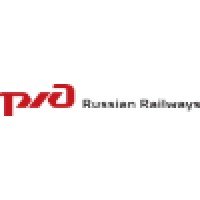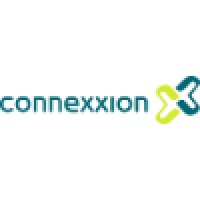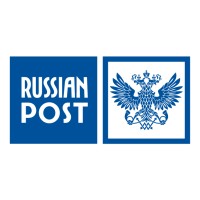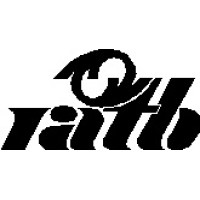
Russian Railways Company Cyber Security Posture
rzd.ruRussian Railways is Russia’s leading railway company and one of the largest companies in the global transport sector. The Company is a natural monopoly and fully owned by the Russian Federation. Our primary goal is to meet the state’s rail transport and employment needs, and to provide services to passengers. Russian Railways is: - one of the largest freight carriers in the world (third in the world by freight turnover); - ranked fourth in the world for passenger rail transportation; - a leading contributor by size to the Russian economy (about 1.6% of GDP in 2013); - supported by the Russian Federation. Russian Railways was established by Decree No. 585 of the Russian Government on 18 September 2003, “On establishment of the Joint-Stock Company ‘Russian Railways’”. Russian Railways began operations on October 1st, 2003. We seek to effectively develop a transportation business that is able to compete on the Russian and international markets, whilst respecting our responsibility as a national carrier and rail infrastructure owner. For more information about Russian Railways, please visit: www.eng.rzd.ru
Russian Railways Company Details
russian-railways
10,001+ employees
0
none
Transportation/Trucking/Railroad
rzd.ru
Scan still pending
RUS_3173788
In-progress
Between 200 and 800
This score is AI-generated and less favored by cyber insurers, who prefer the TPRM score.
 Russian Railways Global Score
Russian Railways Global Score.png)

Russian Railways Company Scoring based on AI Models
| Model Name | Date | Description | Current Score Difference | Score |
|---|---|---|---|---|
| AVERAGE-Industry | 03-12-2025 | This score represents the average cybersecurity rating of companies already scanned within the same industry. It provides a benchmark to compare an individual company's security posture against its industry peers. | N/A | Between 200 and 800 |
Russian Railways Company Cyber Security News & History
| Entity | Type | Severity | Impact | Seen | Url ID | Details | View |
|---|
Russian Railways Company Subsidiaries

Russian Railways is Russia’s leading railway company and one of the largest companies in the global transport sector. The Company is a natural monopoly and fully owned by the Russian Federation. Our primary goal is to meet the state’s rail transport and employment needs, and to provide services to passengers. Russian Railways is: - one of the largest freight carriers in the world (third in the world by freight turnover); - ranked fourth in the world for passenger rail transportation; - a leading contributor by size to the Russian economy (about 1.6% of GDP in 2013); - supported by the Russian Federation. Russian Railways was established by Decree No. 585 of the Russian Government on 18 September 2003, “On establishment of the Joint-Stock Company ‘Russian Railways’”. Russian Railways began operations on October 1st, 2003. We seek to effectively develop a transportation business that is able to compete on the Russian and international markets, whilst respecting our responsibility as a national carrier and rail infrastructure owner. For more information about Russian Railways, please visit: www.eng.rzd.ru
Access Data Using Our API

Get company history
.png)
Russian Railways Cyber Security News
Ukrzaliznytsia detects ‘Russian trace’ in recent cyberattack, as 90% of passenger services restored
This week, Russia's state-owned railway company, RZD, reportedly announced on Tuesday that it was hit by a cyberattack that temporarily ...
Ukraine sees Russian effort to sow chaos as cyberattack hits rail service
A powerful cyberattack knocked out the online ticketing system for Ukraine's state railway service, causing long queues at stations on ...
Geopolitical Infrastructure Crisis: Russian Railways and Cross-Border Logistics Are Ground Zero for Risk and Reward
The Bryansk collapse is a catalyst. Governments will respond: NATO's new undersea infrastructure unit and Poland's closure of Russian consulates ...
Ukrainian Railways cyberattack resembles Russian tactics, cybersecurity official says
The cyberattack that disabled Ukrainian Railways' (Ukrzaliznytsia) ticketing system was a terrorist act that employed "tactics, techniques, and ...
Suspected Russian Cyber Attack Hits Ukraine’s State Railway Operator Ukrzaliznytsia, Disrupting Operations
A suspected Russian cyber attack on Ukraine's state railway operator Ukrzaliznytsia impacted online systems, disrupting ticketing operations ...
Russian Railways Hit by Cyberattack – Website, App Knocked Offline
Russian Railways' website and app were knocked offline by a major DDoS attack. Despite disruptions, ticket sales at stations continued as ...
Sabotage: Protecting European Transportation Networks from Russia
The lessons learned from Ukraine's own campaign to degrade Russia's rail system offer a blueprint for European nations to protect their own ...
Ukraine Railway Systems Hit by Targeted Cyber-Attack
Ukraine's national railway company has suffered a “large-scale” cyber-attack, disrupting online services and operations.
Cyberattack hits Ukrainian state railway, disrupting online ticket sales
The delays followed a large-scale cyberattack targeting Ukrzaliznytsia, the country's state-owned railway operator. The attack disrupted online ...

Russian Railways Similar Companies

Connexxion
Connexxion wil de beste keuze zijn op het gebied van regionaal personenvervoer in Nederland. Met zorg brengen wij mensen op hun bestemming met toegankelijk, duurzaam en veilig vervoer! Wij willen mobiliteit voor iedereen toegankelijk en beschikbaar houden. Want wij geloven dat mobiliteit essentieel

Swift Transportation
Swift Transportation is the largest full-truckload motor carrier in North America. Based in Phoenix, Arizona, the Swift terminal network includes over thirty full-service facilities in the United States and Mexico. Swift provides a full line of service solutions, including linehaul, flatbed, intermo

SBB CFF FFS
We shape the mobility of the future – simple, personal, connected. SBB’s comprehensive service contract allows us to offer a wide range of exciting careers in all areas of business. Thanks to this variety, many different career paths are possible, which we support through education and training o

Russian Post
Russian Post is one of the largest internationally operating logistics groups and the national postal service provider of the Russian Federation. We offer a broad and multimodal portfolio of domestic and international e-commerce, parcel shipping and logistics solutions, by road, sea and air. With a

RATB
Collective Transport Company from Bucharest It operates a complex network of buses, trams and trolleybuses – in fact, all public transport except the Bucharest Metro, which is managed by Metrorex. While owned entirely by the City Council, RATB is an autonomous company. The RATB transport servi

Frequently Asked Questions
Explore insights on cybersecurity incidents, risk posture, and Rankiteo's assessments.
Russian Railways CyberSecurity History Information
How many cyber incidents has Russian Railways faced?
Total Incidents: According to Rankiteo, Russian Railways has faced 0 incidents in the past.
What types of cybersecurity incidents have occurred at Russian Railways?
Incident Types: The types of cybersecurity incidents that have occurred include .
Incident Details
What are the most common types of attacks the company has faced?
Additional Questions
What Do We Measure?
















Every week, Rankiteo analyzes billions of signals to give organizations a sharper, faster view of emerging risks. With deeper, more actionable intelligence at their fingertips, security teams can outpace threat actors, respond instantly to Zero-Day attacks, and dramatically shrink their risk exposure window.
These are some of the factors we use to calculate the overall score:
Identify exposed access points, detect misconfigured SSL certificates, and uncover vulnerabilities across the network infrastructure.
Gain visibility into the software components used within an organization to detect vulnerabilities, manage risk, and ensure supply chain security.
Monitor and manage all IT assets and their configurations to ensure accurate, real-time visibility across the company's technology environment.
Leverage real-time insights on active threats, malware campaigns, and emerging vulnerabilities to proactively defend against evolving cyberattacks.




